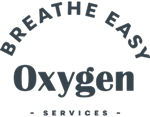Coming to high altitude is no joke for many low-landers.
The air feels “thin” because of how atmospheric pressure affects oxygen at high altitudes. Basically, the higher you go, the less pressure there is – thus the lower the concentration of oxygen, or the “thinner” the air will be. The human body often reacts to the lack of oxygen with fatigue, headaches, nausea and other unmentionables that can quickly ruin a perfectly good mountain vacation.
What is oxygen therapy?
Many of our clients ask, “What is oxygen therapy?”. The answer is simple. Supplemental or oxygen therapy addresses the deficiency by providing more concentrated oxygen in a way that is quickly absorbed and easy to use. Literally speaking, you inhale a mixture of air and oxygen through what medical folks call a nasal cannula (lightweight tube that has two prongs on one end that are placed into the nostrils).This simulates being closer to sea level, therefore minimizing altitude’s effects.
What are the benefits of oxygen?
- Better rest/sleep
- More energy
- Faster recovery from physical exertion
- Increased mental acuity and overall mood
- Fewer acute mountain sickness symptoms
Does oxygen help with altitude sickness?
Most definitely! The reason people feel altitude sickness is the lack of oxygen in the body. When a concentrated amount is inhaled via oxygen therapy, it simulates being closer to sea level, therefore minimizing altitude’s affects.
Is oxygen safe to use?
Yes it is safe. Oxygen therapy requires a prescription from a medical doctor and thus there is a screening prior to administration. They are sure to ask about contraindications or ailments that would be exaggerated by supplemental oxygen.
Is oxygen therapy safe for children?
Children can benefit from oxygen therapy, just like adults. Though they are less likely to show signs and symptoms of acute altitude sickness, it is safe to provide oxygen (at slower rates) to kids.
Is oxygen therapy proven to help sleep apnea?
If you have sleep apnea at lower altitudes, your condition will most likely be exacerbated at altitude. This goes back to our thought that if you’re really sick, we probably would prefer to send you to a doctor. Apnea often requires C-PAP or Bi-PAP equipment. Many with this condition are aware that they should already be using this equipment. If you already have a sleep apnea machine, you will also have a concentrator.
Can I sleep with oxygen all night?
You can wear a cannula all night. That’s actually the optimal method to optimize your daytime activities and minimize acute mountain symptoms.
